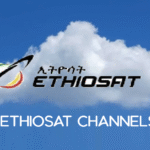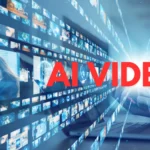Let’s talk about ai video generators and their use for daily life!
DownloadAI Video Generation Research Hub
Welcome to a space dedicated to exploring how artificial intelligence is shaping the future of video creation. This site collects and summarizes research findings, experiments, and breakthroughs from across the AI community — with a focus on text-to-video models, diffusion systems, and the ethical challenges they bring.
Browse Research ArticlesRecent Research Highlights
Inside OpenAI’s Sora: The New Frontier of Text-to-Video
When OpenAI unveiled Sora earlier this year, it marked a turning point for generative video. Built on diffusion transformers, Sora takes the same principles that power image models like DALL·E and extends them into the dimension of time. Early demonstrations show scenes with convincing motion, perspective, and natural lighting — something even the most advanced models struggled with before. OpenAI’s technical paper describes how Sora maintains “spatial and temporal coherence” by operating directly in a latent 3D space rather than predicting individual frames.
Read the full OpenAI Sora paper →Google Veo and the Race Toward Realistic AI Video
Google DeepMind’s Veo model takes a slightly different approach. Instead of relying purely on diffusion, it blends temporal attention with efficient transformer layers, letting the model reason about motion over longer sequences. Veo can generate minute-long clips at 1080p resolution, with subjects that move and interact naturally. The model is still in limited release, but DeepMind’s documentation hints at broader creative applications once safety systems are fully vetted.
Survey: Diffusion Models for Video Synthesis (Stanford & Tsinghua, 2024)
A recent joint study by Stanford and Tsinghua University reviewed more than 80 academic papers on video diffusion models (arXiv:2401.12345). The authors conclude that diffusion methods now consistently outperform GAN-based models in both realism and temporal stability. They also note growing interest in multimodal conditioning — where models generate video from combinations of text, sound, or even depth maps.
Ethical Dimensions: Deepfakes, Watermarks, and Provenance
As AI video systems mature, so do concerns about misuse. Researchers in the ACM Transactions on Multimedia Computing journal have suggested mandatory provenance metadata and embedded watermarking to help trace synthetic content back to its source. Initiatives like the C2PA coalition and Meta’s “AI Video Provenance” project are working toward open standards that promote transparency without limiting creativity.
See related ACM publication →Popular AI Video Tools and Platforms
- Runway ML (Gen-2): One of the most accessible text-to-video tools for creators and educators.
- Pika Labs: A fast-evolving platform with real-time scene editing and camera control.
- Kaiber AI: Known for artistic short-form clips and stylized motion synthesis.
- Synthesia: Corporate-grade video generation using multilingual AI presenters.
- DeepBrain AI: Used by broadcasters to generate human-like virtual anchors.



Comments
Loading…